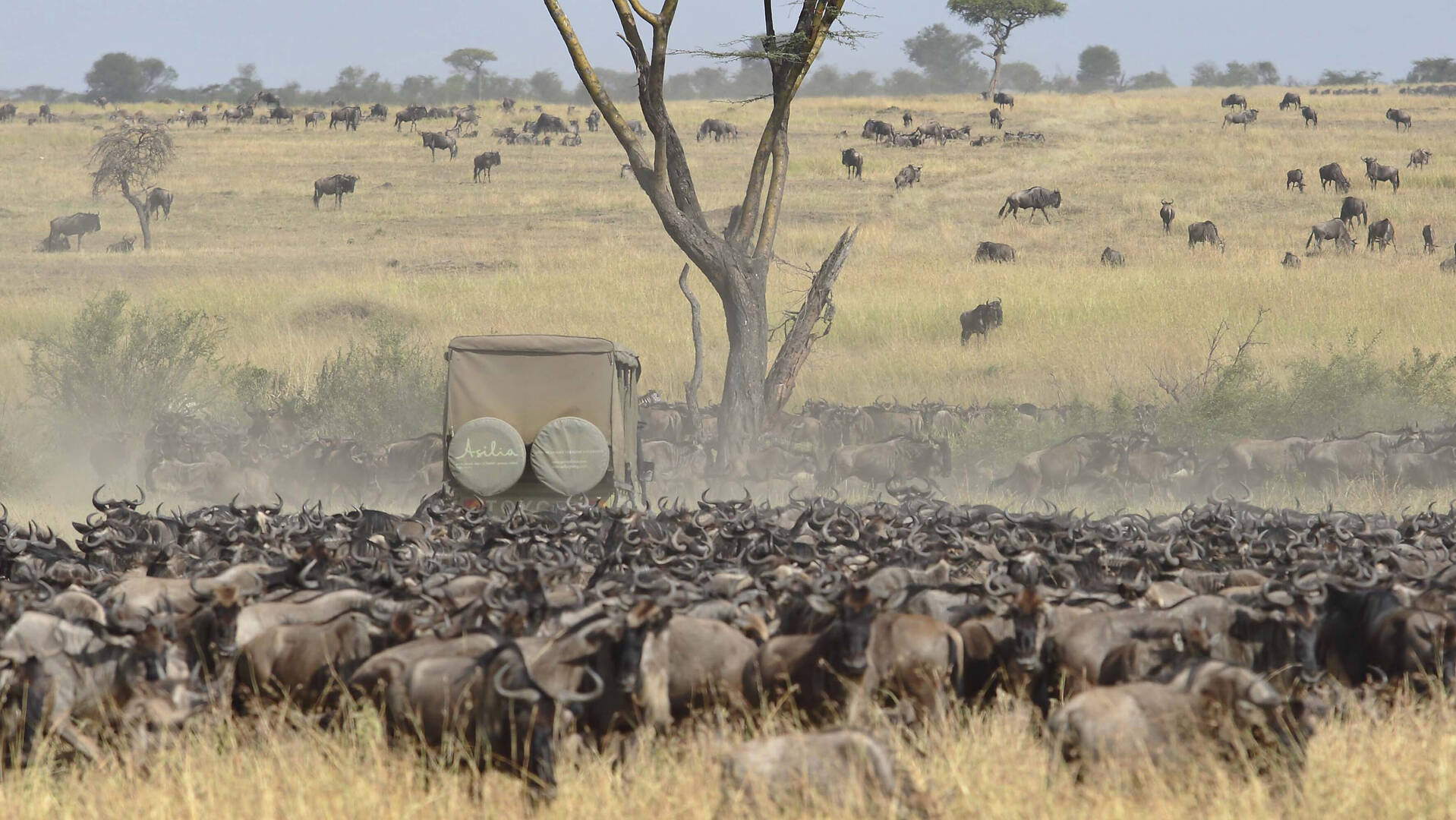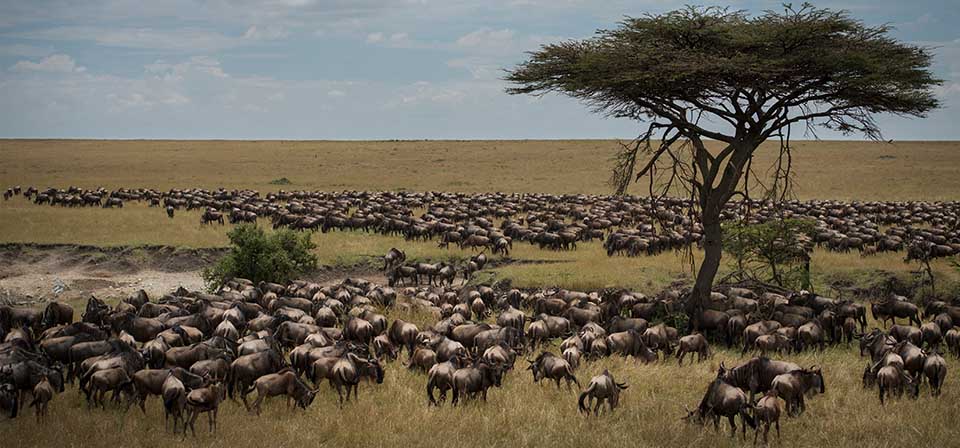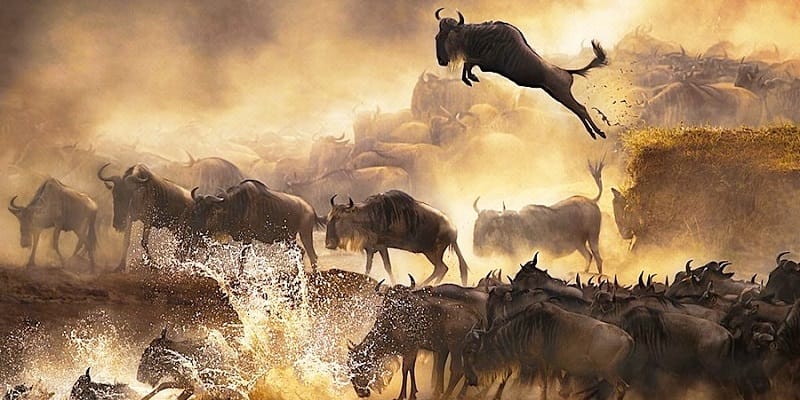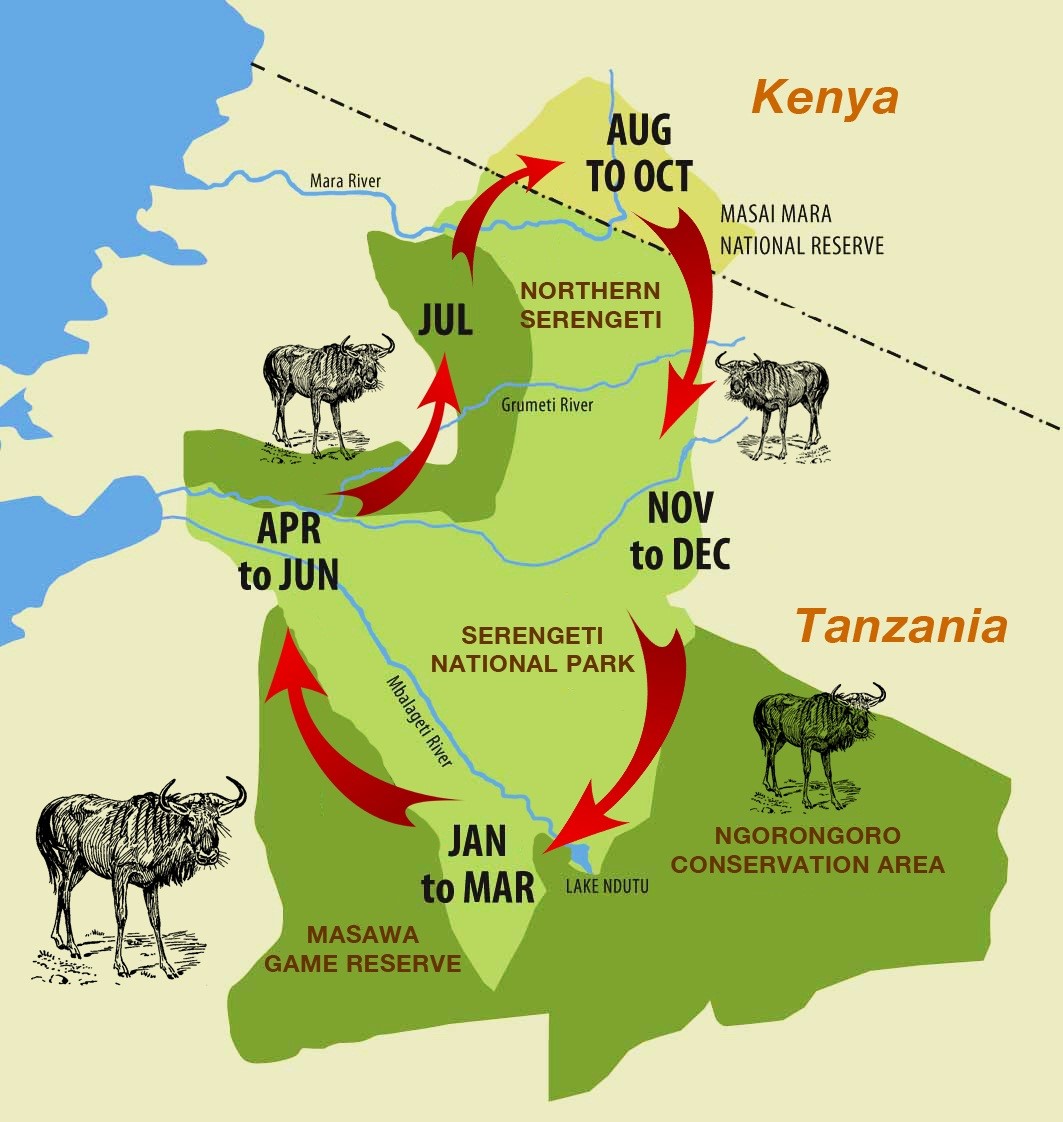Serengeti Wildebeest Migration : Important things to know about the Greater Serengeti wildebeest migration to encounter before heading to the Wildlife Safari

- Serengeti National Park has the oldest ecosystem in the world. This is home to a variety of plants and creatures that cannot be found anywhere else on earth.
- In the Mara River, crocodiles are waiting to swarm, engulfing their prey by grabbing their powerful teeth and pushing them into the water, twisting them to break them into small pieces. Crocodiles can emerge from the water more than half their body length and use their tails as a secondary weapon to grab potential victims.
- During the great wildebeest migration in Africa, about 1.5 million wildebeest, 200,000 zebras, and several other animals traveled across the country.
- Zebras and wildebeest will live together because they eat different parts of the same plant.
- The environment of the Serengeti is home to about 3,000 lions that migrate through the reserve in herds.
Brief Description of Migration
The great Serengeti wildebeest migration is one of the most popular experiences for wildlife and nature enthusiasts. It involves movement large numbers of Serengeti wildebeest, along with large numbers of zebras, smaller numbers of Grant’s gazelle, and Thomson’s move through the Serengeti Mara ecosystem. They migrate year-round, constantly searching for grasslands and fresh water. Along the way, a great drama is always present as hungry predators like lions, clouded leopards, cheetahs, hyenas, wild dogs, and fangs ensure that only the strongest survive While Thousands more are born for repopulating and maintaining the circle of life.
Where did the Great Migration begin?
Because the Great Migration is a flexible, annual movement of about two million animals through the Serengeti-Mara ecosystem, there is no definite beginning or end point. Wildebeest migrations were triggered by rains in East Africa, and the animals followed a centuries old route in search of grasslands and fresh water. This epic journey takes the wildebeest across Kenya’s Maasai Mara plains, south to Tanzania’s Serengeti and the rim of Ngorongoro crater, before spinning clockwise.
Why do wildebeest migrate?
The great African migration is widely believed to have been mainly due to the wildebeest’s response to weather conditions. They move after the rain and the grass grows, basically following a natural instinct to find food to survive. Some experts believe that wildebeest are triggered by distant thunder and lightning, but there is no scientific evidence for this.

Monthly Migratory Cycles
From December to April:
The main spawning grounds can be found in the southeastern Seronera area, the typical Serengeti Plain extending to the Ndutu area near Ngorongoro. Short rains in November and December cause them to move to this area. Wildebeest linger in this area until the end of the long rains, which means late April or early May. The good news is that this part of the Serengeti National Park is easily accessible and, during this time, the landscape becomes lush.
February is generally calving season in the Ndutu region and southeastern plains, making it the best time to visit the region. Since wildebeest, zebra, and other ungulates are numerous and give birth to calves, the sight acts as a magnet for predators. In March or April, the herd may move back in search of greener pastures. Seeing the actual migrations is more difficult at this point, but you will most likely encounter very large herds migrating

May through July
This is wildebeest time. After feeding on the short green lawns southeast of the Serengeti, they give birth to their young and begin to prepare for their 800 km trek. The actual start date could be any time from late April to early June. Now is your chance to witness one of the world’s greatest natural phenomena. Over a million animals walking on pillars up to 40 km long.
During the migration, the herd moves towards the West Corridor, where faces its first major obstacle: crossing the Grumeti River. Many animals did not survive their expected births because of the oversized crocodile population that was ready to eat them. The herd can congregate on the south bank of the river and stay there for up to two weeks before crossing the river.
From August to September
When crossing the Grumeti River obstacle, the herd moves further north and starts to head overtake the next big one Hurdles, Mara River, in July or August. The crossing of the Mara River is where many iconic photographs of the Great Migration are taken. After this crossing, the herd headed to the northwestern plains and the Maasai Mara National Reserve in Kenya. The period from August to September is considered a bad time to visit Serengeti National Park and see the great migration as the herds head to the Maasai Mara in Kenya. However, migration patterns show that about half of the herds remain on the Tanzanian side, in the Mara-Serengeti region.
October-November
The northbound crossing of the Mara means that at some point the herd has to cross the river again before setting off on its walk south. This usually happens in October, but sometimes earlier. During this period, the herd will cross the northern plains and the Lobo region. This part of the Serengeti National Park is less visited, so if you’re looking to watch the relatively calm exodus, now is the time. The wildebeest returned to the short grass plains and from there the Great Migration began again.
The Migration Circle can be shown on the Map as follows



